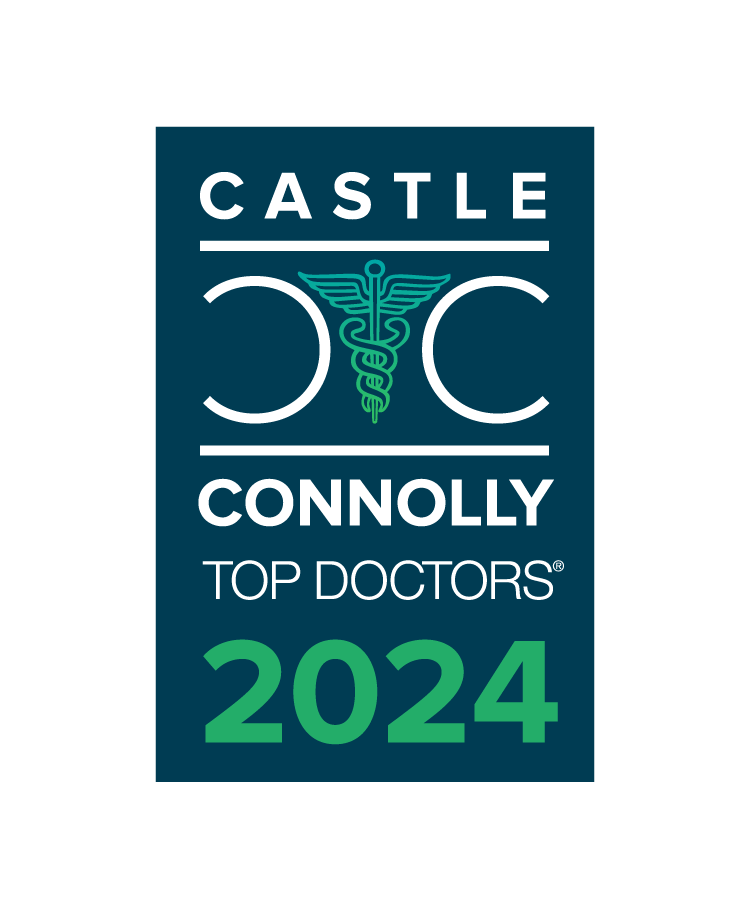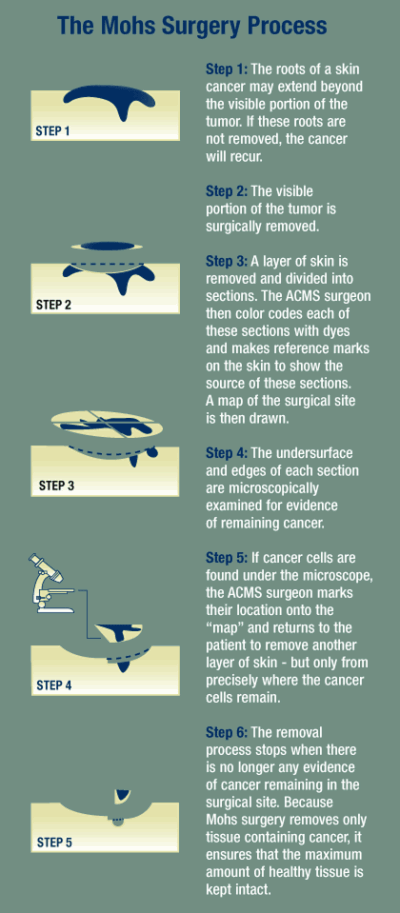Mohs Surgery FAQS
Mohs Micrographic Surgery

Why Choose a Fellowship Trained Mohs Surgeon?
It’s important to choose a fellowship trained Mohs surgeon who is a member of the American College of Mohs Surgery. Mohs College surgeons have undergone at least 1 year of fellowship training beyond dermatology residency, which allows for additional hands-on experience in all of these specialized processes and techniques, in addition to reconstruction. Dr. Curcio is a member of the American College of Mohs Surgery and has performed thousands of cases of Mohs surgery and reconstruction.
Mohs Surgery Frequently Asked Questions
Why is it called Mohs surgery?
Mohs ProcessThe term “Mohs” refers to Dr. Frederic Mohs, who developed this surgical technique.
What is Mohs surgery?
Mohs surgery is a highly specialized and precise treatment for skin cancer in which the cancer is removed in stages, one tissue layer at a time. It is an outpatient procedure, performed under local anesthesia, and is distinguished by a specific technique of tissue examination that is unique to Mohs surgery. It provides a cure rate of approximately 99% for basal cell carcinoma and squamous cell carcinoma if it is the initial treatment.
How does the Mohs surgery procedure work?
A tissue layer around the cancer is removed, its edges are marked with colored dyes, and a map of the specimen is created. The tissue is then processed onto microscope slides by a Mohs histotechnician. These slides are carefully examined under the microscope by the Mohs surgeon so that any microscopic roots of the cancer can be precisely identified and mapped. If cancer cells are seen, an additional tissue layer is removed only in areas where the cancer is still present, leaving normal skin intact. This saves as much normal, healthy skin as possible.
Once the cancer has been removed, the Mohs surgeon will explain options for repair of the wound, including natural healing (granulation), stitching the wound together using a side-to-side closure, or using a skin flap or graft.
I don’t see anything after my biopsy. Do I really need to be treated?
Yes. Following a biopsy, your skin cancer may no longer be visible. However, more tumor cells may remain in the skin. These can continue to grow downward and outward, like roots of a tree. If they are not removed, the tumor will likely reappear and require more extensive surgery. Tumors that are neglected can spread deeply into the skin and invade nearby structures. On rare occasions, these cancerous cells can metastasize to lymph nodes and other organs in the body.
Why does my skin cancer need to have Mohs surgery?
Mohs surgery has the highest cure rate. It is appropriate for most skin cancers and especially suitable for skin cancer that:
- Is in an area where it is important to preserve healthy tissue for maximum functional and cosmetic result
- Was treated previously and has come back
- Is located near scar tissue
- Is large
- Does not have clearly defined edges
- Is growing rapidly or uncontrollably
- Is of an aggressive subtype (i.e., sclerosing or infiltrating basal cell carcinoma)
- Develops in organ transplant or lymphoma patients
How long does Mohs surgery take?
While it is impossible to predict exactly what timeframe to expect for each Mohs surgery procedure, the entire procedure usually lasts several hours. Rarely, clearing the tumor and reconstructing the defect can take the better part of a day. Most of the time, the patient is waiting for the tissue to be processed and analyzed. Patients can bring books to read, work to do or watch television while they wait. Patients should eat before the procedure and bring snacks or lunch with them.
Will Mohs surgery leave a scar?
Yes. Like any surgical treatment for skin cancer, Mohs surgery will leave a scar. Mohs surgery preserves as much healthy skin as possible and maximizes options for repairing the surgical defect, once the tumor is completely removed. Once the Mohs surgeon has completely removed your skin cancer through Mohs surgery, reconstruction for optimizing the final functional and cosmetic result becomes the highest priority. Generally, a post-surgical scar improves with time and can take up to 1 year or more to fully mature. If you have a history of abnormal scarring, such as hypertrophic scars or keloids, or if there are problems with the healing of your scar, injections or laser treatments may be used to optimize the cosmetic result. Dr. Curcio is an expert in treating post-surgical scars and surgeon is available for you throughout the healing process to discuss any concerns that may arise.
Will I be put to sleep for Mohs Surgery?
No. Mohs surgery is performed with local, injectable anesthesia in an outpatient setting. There is no general or intravenous sedation used.
Does my insurance cover Mohs surgery and Reconstruction?
Medicare and most insurance plans cover the majority of costs associated with Mohs surgery and reconstruction. We will verify the details of each plan prior to surgery.










